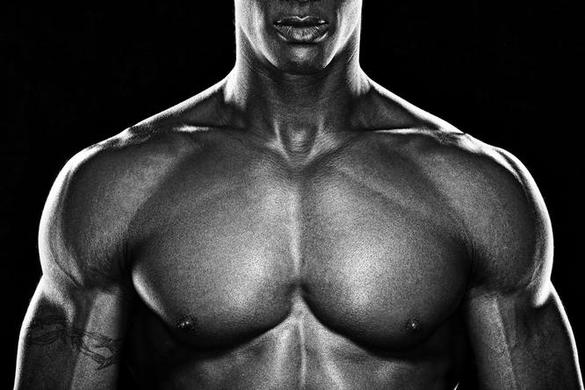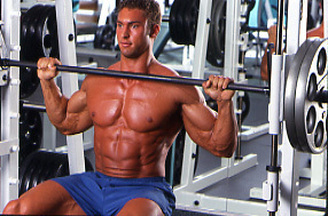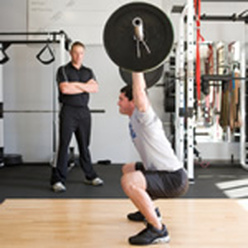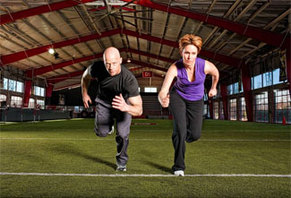Redesign your upper body using this cutting-edge muscle plan
By Todd Durkin, C.S.C.S.,
Illustrations by Kagan McLeod,
Photographs by Scott McDermott,
Posted Date: April 11, 2010
IT TAKES MORE THAN A BIG BENCH PRESS to build a big chest. That's because your chest muscles can do a lot more than push things away when you're flat on your back. They can also pull things toward you when you're standing up. In fact, your pectoral muscles perform more actions at more angles and in conjunction with more upper-body muscles than most of us ever consider. Sometimes they're the stars, but on other exercises they're more like bench players. Because of that, they respond to low reps, high reps, and everything in between. (For more ways to sculpt a bigger chest, pick up a copy of The New High Intensity Training today!)
The best chest-building program takes advantage of that versatility by working your pecs and all their buddies, using every angle and rep range. You can end up with more beef in your back, shoulders, and arms, and in the process develop bigger chest muscles than you'd ever see with a steady diet of benches, benches, and more benches.
(Find more exercises that can help any man to go from scrawny to brawny. Men's Health Personal Trainer features workouts and videos demos that you can download and take with you to the gym. Find out more)
THE WORKOUT
Do this workout twice a week, resting for at least 2 or 3 days in between. (Work your lower body on a separate day.) Alternate between exercises of the same number until you complete all the sets in that pairing. So you'll do 1 set of exercise 1A, rest for 45 seconds, do 1 set of exercise 1B, and rest 45 seconds again. Repeat until you complete all sets, and then rest 2 minutes before moving to the next pair.
READ MORE:
By Todd Durkin, C.S.C.S.,
Illustrations by Kagan McLeod,
Photographs by Scott McDermott,
Posted Date: April 11, 2010
IT TAKES MORE THAN A BIG BENCH PRESS to build a big chest. That's because your chest muscles can do a lot more than push things away when you're flat on your back. They can also pull things toward you when you're standing up. In fact, your pectoral muscles perform more actions at more angles and in conjunction with more upper-body muscles than most of us ever consider. Sometimes they're the stars, but on other exercises they're more like bench players. Because of that, they respond to low reps, high reps, and everything in between. (For more ways to sculpt a bigger chest, pick up a copy of The New High Intensity Training today!)
The best chest-building program takes advantage of that versatility by working your pecs and all their buddies, using every angle and rep range. You can end up with more beef in your back, shoulders, and arms, and in the process develop bigger chest muscles than you'd ever see with a steady diet of benches, benches, and more benches.
(Find more exercises that can help any man to go from scrawny to brawny. Men's Health Personal Trainer features workouts and videos demos that you can download and take with you to the gym. Find out more)
THE WORKOUT
Do this workout twice a week, resting for at least 2 or 3 days in between. (Work your lower body on a separate day.) Alternate between exercises of the same number until you complete all the sets in that pairing. So you'll do 1 set of exercise 1A, rest for 45 seconds, do 1 set of exercise 1B, and rest 45 seconds again. Repeat until you complete all sets, and then rest 2 minutes before moving to the next pair.
READ MORE:




 RSS Feed
RSS Feed







